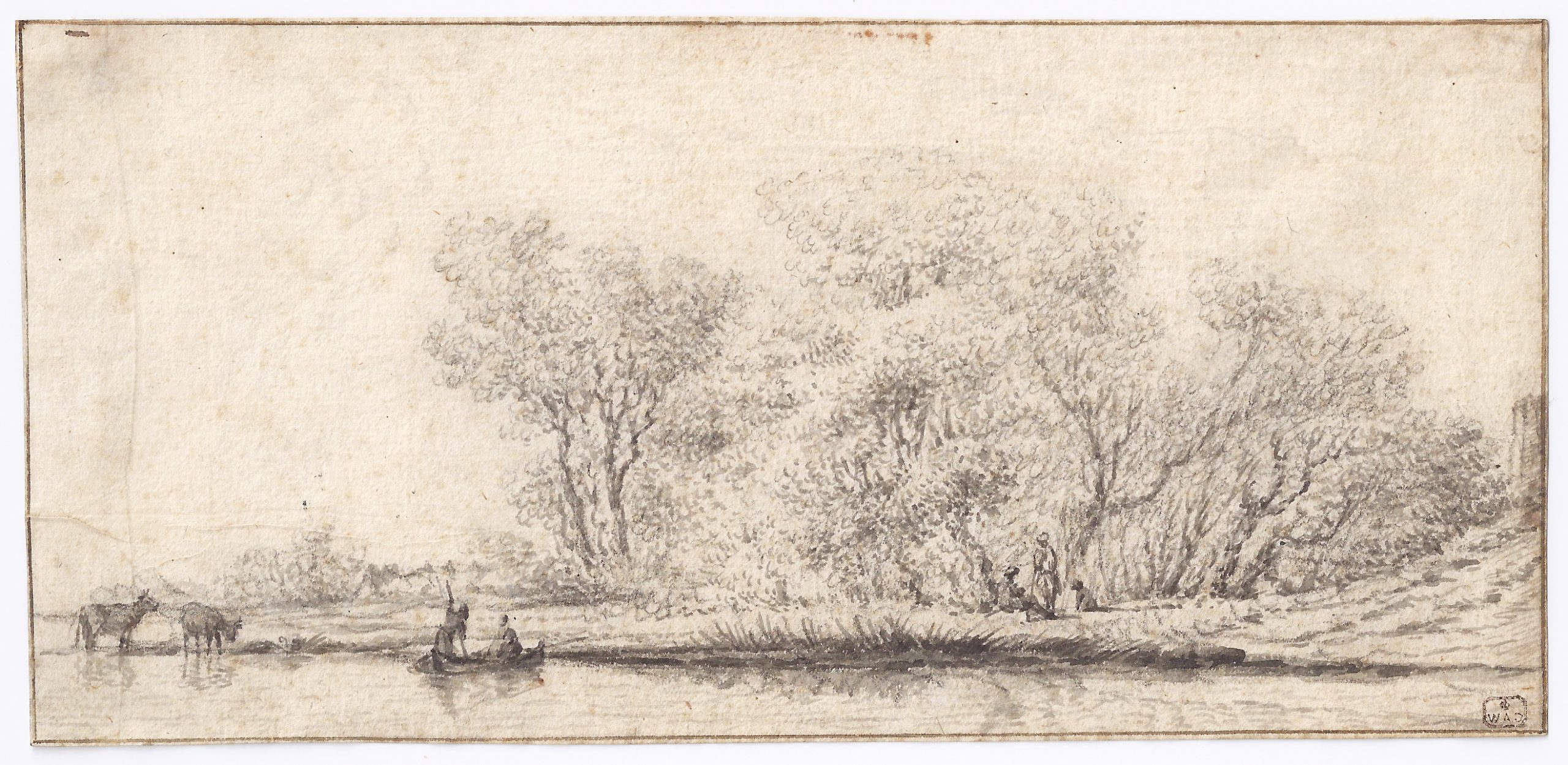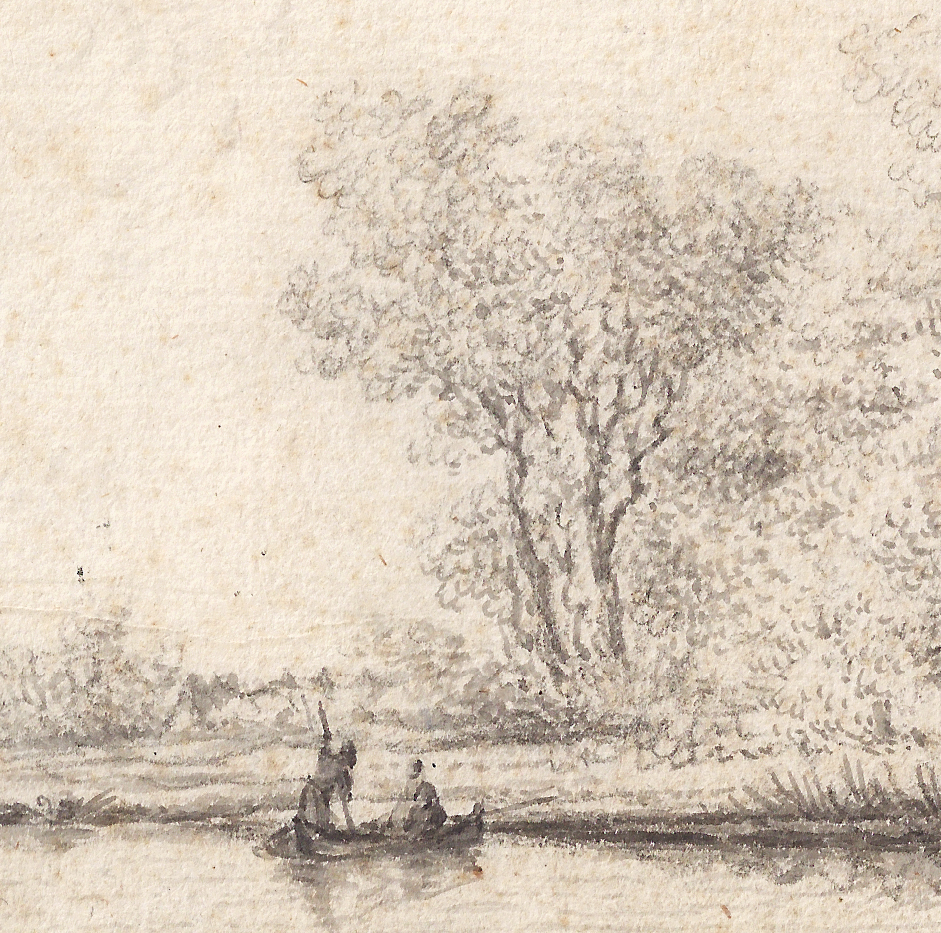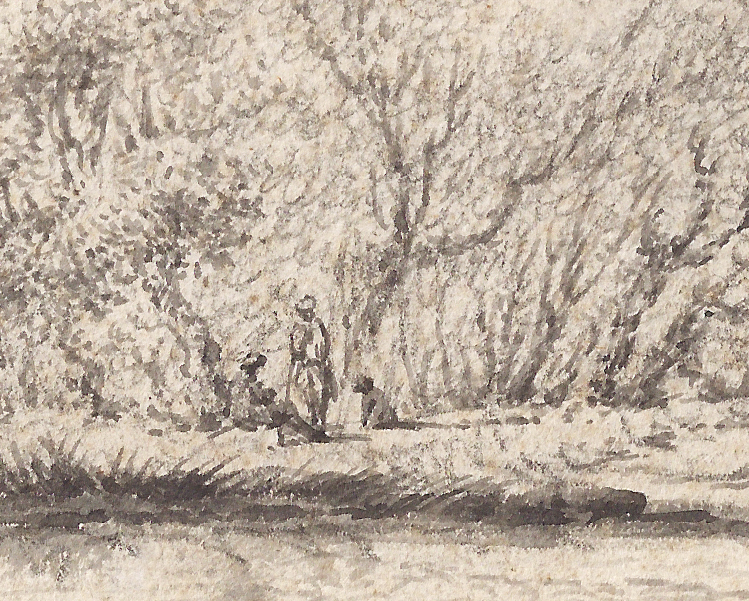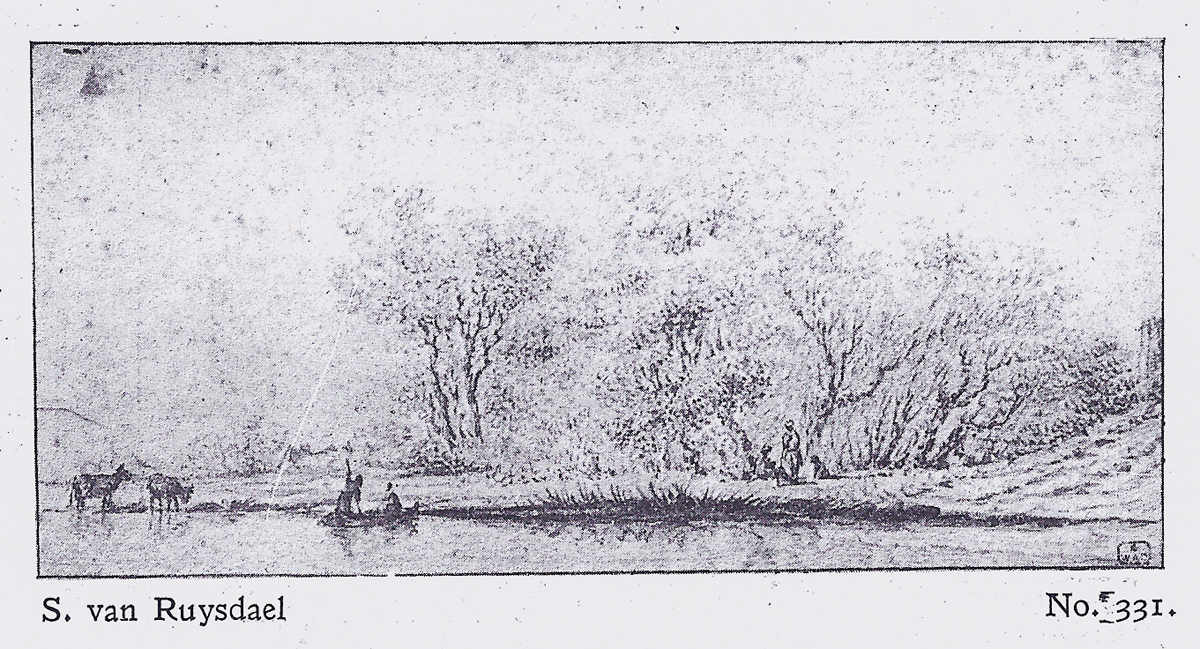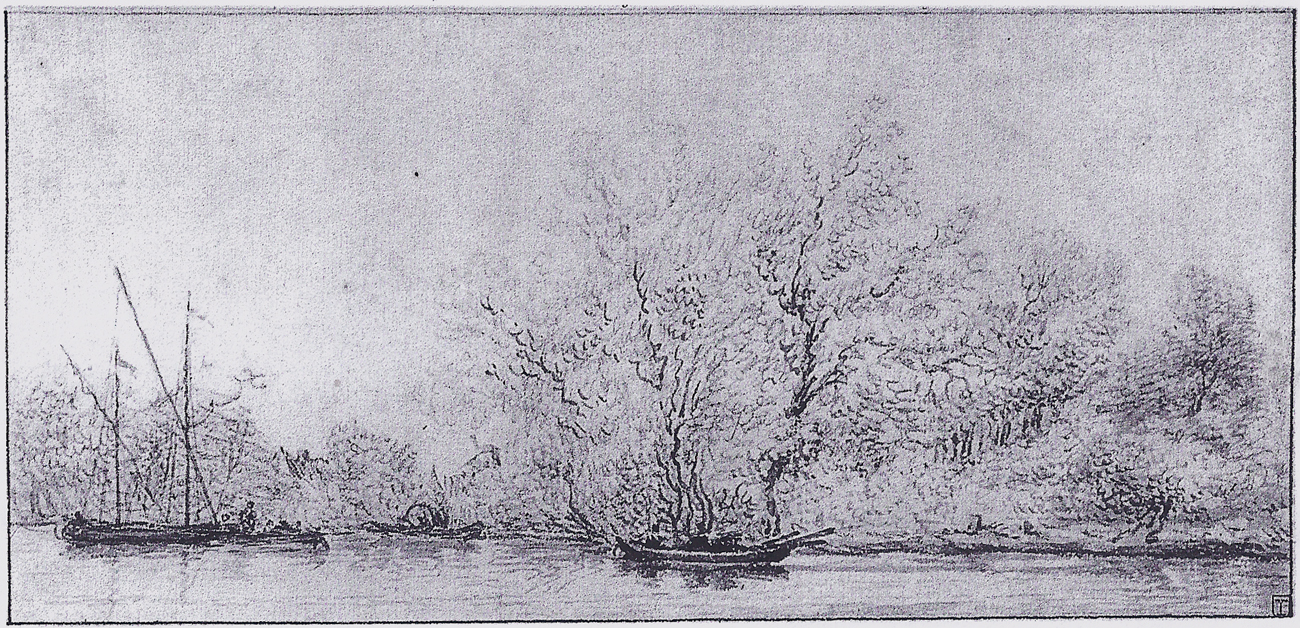SALOMON VAN RUYSDAEL (Naarden c.1600/03 – 1670 Haarlem)
Salomon van Ruysdael (Naarden c.1600/03 – 1670 Haarlem)
A Wooded River Landscape with Figures in a Boat, Cattle Watering Nearby
Black chalk, grey wash, brown ink framing lines, 103 x 216 mm (4.1 x 8.3 inch)
Provenance
- Prince Wladimir Nikolaevitch Argoutinsky-Dolgoroukoff (1875– 1941), Paris (Lugt 2602d)
- His sale, R.W.P. de Vries, Amsterdam, 27 March 1925, lot 331 (as Salomon van Ruysdael); to ‘Duveen’ for Dfl. 160
- With Joseph Duveen, 1st Baron Duveen (1869–1939)
- Olympia Galleries, Philadelphia, c. 1975 (as Salomon van Ruysdael, where titled ‘Eel Fishers’)
- Private collection, USA
***
Salomon van Ruysdael was inscribed in the guild at Haarlem in 1623, and lived there for the remainder of his life.1 His earliest dated landscape is from 1626, and he received praise as a landscape painter by Samuel Ampzing in his description of the city of Haarlem in 1628. Ruysdael’s teacher is not known, but his earliest landscapes reveal the influence of Esaias van de Velde, who was in Haarlem from 1610-18. With Jan van Goyen and Pieter de Molijn, Ruysdael pioneered the Dutch landscape, characterised by its modest subject-matter and restricted tonality. Salomon was the uncle of Jacob van Ruisdael.
Not a single drawing can be given to Ruysdael with absolute certainty.2 The extensive underdrawing found in so many of his paintings is often held up as the explanation for the fact that no preparatory drawings for his landscapes are known; the artist appears simply to have drawn directly onto the panel or canvas, rather than working out his compositions in advance on paper.3 In the absence of any signed sheet, the attribution of drawings to this central figure of Dutch landscape art therefore depends on stylistic comparison with the underdrawings in his paintings, and on their general compositional similarities with the artist’s painted works, which has established a small corpus of around a dozen drawings currently given to Ruysdael.4
From the evidence of Ruysdael’s underdrawings and the handling of the paint, the artist is known to have been left-handed.5 Typical left-handed depiction of foliage can for instance be observed in an infrared reflectogram of Ruysdael’s River Landscape in the National Gallery, London (see fig.).6 Our drawing displays highly comparable left-handed hatching of the foliage, which further contributes to its autograph status. A comparable drawing by Ruysdael was sold at Sotheby’s in 1994 (see last fig.).7 The Sotheby’s sheet is of near-identical dimensions to our drawing, and it is possibly they originate from the same sketch-book.
In a number of paintings from the 1630s, Ruysdael turned away from the very powerful diagonal compositions for which he is best known and painted scenes such as this, depicting small numbers of boats by wooded riverbanks which lie more or less parallel to the picture plane, for example the Riverbank with Two Leafless Trees of 1633 in the Mauritshuis, The Hague.8
The drawing’s former owner, Prince Wladimir Argoutinsky-Dolgoroukoff, was of Armenian nobility. He was curator at the Hermitage in St Petersburg during the Russian Revolution, and later entered a diplomatic career and settled in Paris. According to Frits Lugt, who knew him well, ‘Son intérieur parisien était d'un désordre pittoresque où lui seul se reconnaissait. C'était toujours un plaisir de s'entretenir avec cet homme aux manières où se reflétait un monde passé. Cachotier dans les affaires, il était au contraire d'une grande générosité pour ceux qui la méritaient.’9 At the Prince’s sale in 1925 the drawing was purchased by Lord Duveen, one of the greatest art dealers of all time.
SOLD
1. For the artist, see W. Stechow, Salomon van Ruysdael: eine Einführung in seine Kunst, mit kritischem Katalog der Gemälde [...], Berlin 1975.
2. See Stechow, op. cit., pp. 59-61. For a recent discussion, see Jane Shoaf Turner, Dutch Drawings in the Pierpont Morgan Library, seventeenth to nineteenth centuries, New York 2006, cat. no. 264, p. 176.
3. Ruysdael’s underdrawing has been described as ‘the most spectacular … found so far in paintings of this period’, C. Brown, Dutch Landscape. The early years, Haarlem and Amsterdam 1590–1650, exh. cat. London (National Gallery) 1986, p. 52.
4. These include: Wooded Landscape with Village, 157 x 258 mm; Amsterdam, Rijksprentenkabinet, inv. RP-T-1918-433, I.Q. van Regteren Altena, Ars Auro Prior, Amsterdam 1981, p. 449, fig. 3; River Landscape with Bridge, 151 x 261 mm; Museum der bildenden Künste Leipzig, Leipzig, inv. no. 830; Landscape with Church in the Background, 186 x 285 mm, National Gallery of Canada, Ottawa (Canada), inv. no. 17909; River Landscape with the Church of Warmond, 167 x 273 mm, National Gallery of Scotland, Edinburgh, inv. no. D 1094, Catalogue of Netherlandish Drawings, The National Gallery of Scotland, Edinburgh 1985, p. 72, fig. 475; Wooded Landscape with Windmill and Houses, 75 x 170 mm, Paul Brandt, Amsterdam, 17 June 1968, lot. 942, repr.; River Landscape with Boats before a Densely Wooded Bank, 102 x 214 mm, Sotheby’s, London, 4 July 1994, lot 84, repr. (US$ 5663); Wooded Landscape with Farmhouse, 102 x 195 mm, Sotheby’s, New York, 23 January 2001, lot 288, repr.; River Landscape with a Bridge at the Right, 102 x 209 mm, Sotheby’s, Amsterdam, 4 November 2003, lot 70, repr.; Wooded Riverbank, 103 x 210 mm, Christie’s, Paris, 10 April 2013, lot 25, repr. (US$ 7343); Wooded Riverbank, 103 x 209 mm, Christie’s, Paris, 10 April 2013, lot 26, repr. (US$ 13870). The last five drawings are of virtually identical size to our sheet, and it is possible they come from the same sketch book.
5. Turner, op. cit., p. 176.
6. Brown, op .cit., p. 54, fig. 8.
7. Black chalk and grey wash, 102 x 214 mm, Sotheby’s, London, 4 July 1994, lot 84, repr.
8. Oil on panel, 32.8 x 51.3 cm; inv. no. 941; Stechow, op. cit., no. 498A, fig. 16.
9. F. Lugt, Les marques de collections de dessins & d'estampes, Supplément, The Hague 1956, p. 375.
